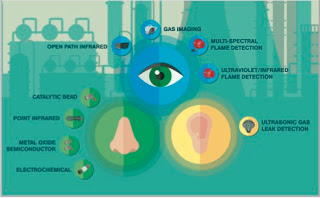Magnetic level gauges are often employed in along with magnetostrictive, guided wave radar, or other measurement means to provide a reliable local display of liquid level. They can also be used to provide an an electrical signal that can be transmitted to recording instrumentation or controllers.
"Mag Gauge" construction is fairly simplistic – here's how it works: A magnetic float, designed for the specific gravity of the material being measured, rides inside a vertical pipe on top of the process media. A gauge with a magnetically coupled visual indicator is fastened to the pipe. As the media inside the pipe rises and falls, the visual indicator moves in the same fashion.
The features of Magnetic level gauges include:
- Visual tank level indication.
- Wide operating temperature and pressure range.
- Continuous level measurement.
- No electric power required for operation.
- Low maintenance.
- Easier to read from greater distance than glass sight gauges.
- Can be applied to wide fluid level ranges with a single instrument.
- Break resistant, sturdy.
- Wide range of construction materials available.
- External mounting of ancillary indicators, switches, and transmitters with isolation from process media.
There are a number of options available so you can customize the level indicator for each specific application. The best way to proceed is to combine your process knowledge with that of a product specialist. Collectively, you'll be able to achieve an effective solution to your application challenge.

